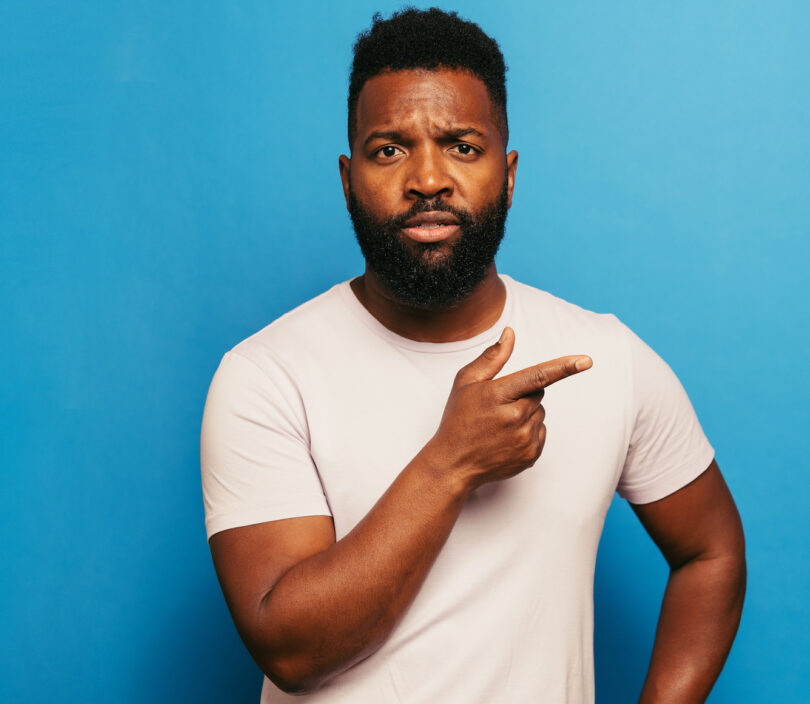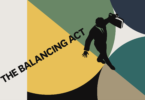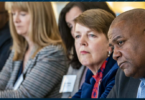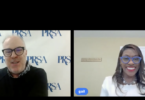During season 1 of the highly regarded PBS series “America Outdoors with Baratunde Thurston,” the host has explored the country, finding coal miners turned beekeepers in Appalachia, backcountry pilots in Idaho, birders in Minnesota’s Arrowhead Region and signs of life in Death Valley.
“There are infinite ways to talk about our relationship with the outdoors,” Thurston said in an interview with PRsay. “What’s important to us is that the stories we pick give us a fresh way to see ourselves as people, as a nation and beyond.”
Thurston is an Emmy-nominated storyteller and producer, recognized for his work at the intersection of race, tech, democracy and climate. Regardless of his work — creator and host of the acclaimed podcast “How To Citizen” and a founding partner of Puck, a new media startup — he skillfully combines humor and insightful analysis to explore the state of our nation and offer possibilities for its future.
Thurston is a speaker at PRSA’s Travel and Tourism Conference, held June 20-23, at the Monona Terrace Community and Convention Center in Madison, Wis.
Ahead of his morning keynote on June 23, Thurston discusses his reaction to the show’s success, how to find yourself in the great outdoors and the marketing powers of PBS affiliates.
What has been your reaction to season 1 — specifically with how it has resonated with audiences? And based on the show’s success, what are your expectations now for season 2?
My own reaction to season 1 was, “Wow! We made a dope TV show!” It’s one thing to have the experiences I had, and it’s another to see it represented with sound, color correction and those slow-motion drone shots. I’m really proud of what we put together.
As for audiences, it’s been almost universally positive, which, in the internet era, feels miraculous. One person wrote me to share that she’s disabled and can’t experience the outdoors the way she’d like, but [after] seeing the show, she felt that she got to travel and experience these places through me. My friends have told me they watch with their kids. And so many people are proud of seeing themselves represented in the series, especially folks who aren’t normally painted as “outdoorsy types.”
For season 2, I hope we get the same positive reaction and that folks resonate with our continued effort to showcase a wide range of Americans who have this deep connection to nature. I also hope people tell their friends about it. As for expectations, I try to keep those low.
There’s a lot of America to see, and you have six episodes in a season. What are some factors in deciding on a location to explore? Are CVBs and other tourism groups pitching you now to come and visit?
This country is big, and most people are proud of their regions. I get hit up all the time through my website and social media with appeals to bring the show to their neck of the woods. And yes, some of them are tourism groups and official outlets. Bring it on! Make your case!
What we look for is always a deep connection to nature. The reasons vary. In some cases, the stories are about health and wellness achieved through that relationship. In others, it’s about conservation or restoration efforts. In yet others, it’s about labor, tradition, and a longstanding way of life that people are fighting to preserve amid change, or it’s about scientific researchers. There are infinite ways to talk about our relationship with the outdoors. What’s important to us is that the stories we pick give us a fresh way to see ourselves as people, as a nation and beyond.
How is the show promoted? Every local PBS affiliate has seemingly been doing marketing for it. How has this process differed from other promotions that you’ve been part of in the past?
I’ve told a lot of stories in many formats throughout my career: cable television, YouTube series, podcasts, books, public speaking, social media live events, standup comedy shows. I ran digital for The Onion and “The Daily Show.” I’ve had my own marketing clients, and I can truly say that the impact of the marketing around this show has exceeded anything else I’ve done. The closest comps are my 2019 TED Talk and my 2012 memoir, “How to Be Black.”
With the book, it hit at just the right time, and I deployed all I knew about digital marketing to do my own PR, including having my own digital street team and doing a lot of high-impact one-on-one targeted outreach.
With the TED Talk, again, timing mattered — that talk was about deconstructing racism and came just ahead of the 2020 racial reckoning moment — but also, TED has a massive network through the various TEDx communities, and the organization is strong with digital marketing.
With this PBS series, we have absolutely benefitted from, and even depended on, the massively local nature of PBS. It’s not a traditional top-down network where decisions come down from headquarters. It’s over 300 member stations with local accountability. The PBS board is heavily populated by local station managers. And the way shows are carried is opt-in.
So it’s a more federated model, which means, if a station decides to carry our show, they also want people to see it rather than feeling obligated to carry and promote it. The show itself was born out of a local station, Twin Cities Public Television (TPT), in Minnesota. S0 “America Outdoors” is a locally grown, nationally distributed, locally promoted hybrid thing. Each station has email lists and mailers, and other forms of promotion.
When the show was gearing up, I got texts from friends all over the country sending me screenshots of mailers and newspaper inserts with my face on them. You can’t buy that kind of promotion. Well, you can, but you’ll go broke fast. It’s so satisfying, and I can’t overstate the impact. Many of us make art and tell stories, but if no one knows about them or experiences them, then it can be really deflating.
How would you encourage someone to find themselves through nature in these stressful times? And without the compulsion to document it on social media or stop to check work email?
Experiment. There’s no one way or a “right” way to find yourself through nature, as you put it. It can look like many things: meditating in your backyard, going on a 10-day Appalachian Trail hike, swimming in a local pond, growing food on your balcony, visiting a state or national park and more.
The important thing is to consciously choose to invest in that relationship with nature. We evolved from other life. We live as part of a cycle of life that goes far beyond our own species. We are drawn to explore our inner selves and the farthest reaches of the universe. But choosing to invest in a relationship with this planet, with nature, can help us discover our own nature and better tend to it.
I also want to acknowledge that it can be difficult to have that experience — a walk, ride, run, etc. — and be fully present. Too often, I go on my regular neighborhood walks and listen to podcasts, severing the very connection between me and the natural world I’m trying to deepen. Or, I photograph and video document and share it. Some of that is OK and impossible to avoid, but try to choose moments of total immersion. If it’s a 30-minute walk, then make 10 of those minutes device-free and really notice everything around you. It’s a worthwhile investment.
As we head into summer, do you have any travel and tourism trends to share? We need something to replace “bleisure!”
I had to look up “bleisure,” and I hope never to have to say or type that word again!
I’m not sure how to measure a trend, but something I’m seeing and feeling more is a desire to connect as authentically as possible to the places we visit. It feels icky to travel all this way just to eat and drink and stay in the same places we can stay at home or anywhere on Earth. I also think that historical awareness of the places we visit is increasing. Indigenous land acknowledgement is growing as a part of events, and I hope it’s extending beyond that to actual curiosity about the original inhabitants of the places we visit and engagement with the current indigenous residents.
Travel has a long history of colonial mindset and practice. It’s been extractive in a literal sense. But there’s an opportunity to decolonize travel and use these trips to build bridges and relationships that deepen our understanding of the places we visit and increase our shared connection to our fellow humans.
John Elsasser is the publications director at PRSA. He always enjoys the great outdoors of his hometown New York City.







